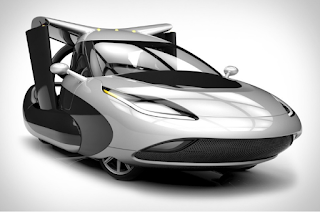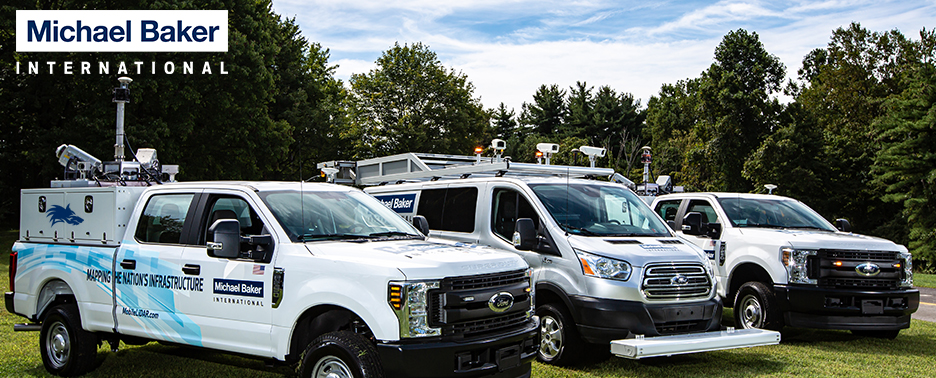- 168: The number of Megabytes of data created EVERY SECOND by each of our Mobile LiDAR systems when we fire the lasers and cameras at their maximum rates.
- 150: Weight in pounds of each of our 4 Mobile LiDAR systems.
- 35: Weight in pounds of each of the two onboard LiDAR sensors that comprise each of our systems. The solid, machined-aluminum chassis of each sensor doubles as a giant heat-sink to dissipate internal heat generated by the sealed unit.
- 2: Number of hours it takes to transfer and test one of our Mobile LiDAR systems from its regular vehicle mount to our boat or UTV.
- 1.2 Million: Number of discrete laser shots each of our Mobile LiDAR systems is capable of generating EVERY second.
- 4.8 Million: The astonishing number of measurements calculated by each LiDAR system every second. Each discrete laser shot can result in up to 4 returns (1st, 2nd, 3rd, and Last).
- 5: The number of primary camera units deployed with each Mobile LiDAR system. Four cameras can maneuvered to a myriad of locations along the vehicle and can simultaneously fire up to 2 frames per second (fps). The 5th camera is our Ladybug 360 spherical unit, which can fire at a rate of 3 fps.
- 6: The number of individual cameras that are housed in the Ladybug spherical camera system – software automatically stitches the individual images together for spherical viewing. The versatile spherical camera unit also produces individual calibrated images that can be used to colorize the corresponding LiDAR point-cloud, or loaded into 3rd-party applications (such as our Orbit WebViewer) for overlay of the point-cloud.
Wednesday, August 31, 2016
By the Numbers: Lasers and Cameras
Friday, August 26, 2016
Picture of the Week: Orbit RGB Point Cloud
A couple months ago we discussed how we served LiDAR data in Orbit GT through the Baker Enterprise Architecture for Spatial Technology (BEAST). Below are some images of how we are using RGB colorization in Orbit. The colorization of the point cloud has evolved from using two cameras with our first Optech Lynx v200 system to the integration of the LadyBug spherical camera - revisit our post from 2010 called Coloring the Cloud.
 |
| The RGB colorized point cloud is seamlessly integrated with the LadyBug panoramic imagery after calibrating in Optech's LiDAR Mapping Suite (LMS) software. |
 |
| Escaping the view using the panoramic imagery, the user can work directly with the colorized point cloud. |
 |
| The blue points represent camera exposures that the technician can "step into" for feature extraction and review of the panoramic imagery. |
Stephen
Wednesday, August 24, 2016
By the Numbers
- 4.5: Typical number of days an average project occupies a Mobile LiDAR equipment resource (mobilization, collection, and demobilization).
- 60-100: Number of miles 1 LiDAR system can regularly capture per day under normal driving conditions for urban and rural areas.
- 37,500: Average annual mileage travelled by each of our 4 LiDAR systems.
- Since purchasing our first Mobile LiDAR system:
- 200+: Number of completed projects;
- 29: Number of U.S. States in which we’ve performed collections. We also have multiple Countries under our belt as well;
- 25+: Departments of Transportation or Transportation Agencies for whom we’ve successfully completed projects;
- 400+: Miles of railway captured from Hi-Rail mounted equipment throughout several projects;
- Fostered tens of Millions in econmic impact;
- Coached numerous agencies through their development of Mobile LiDAR Guidelines; and,
- 13: The Baker’s Dozen: 13 Laws of Mobile LiDAR
Cheers!
Aaron
Wednesday, August 10, 2016
We Can’t Stop Imagining the Possibilities!
 |
| Copyright, Hanna Barbera and Warner Bros. Entertainment, Inc. All Rights Reserved. |
To see the video of this Terrafugia vehicle in flight use this link: https://www.terrafugia.com/the-transition/ or https://www.terrafugia.com/
How does this sort of technology relate to Michael Baker? When our company entered the Mobile LiDAR market seven years ago, we spent a lot of time here at our company discussing, amongst our LiDAR team and clients, the real issues we encounter with occlusion of LiDAR from either the ground (mobile) or from an airplane (aerial). In either scenario, line of sight limitations won’t let us see the top of things from the ground, under things from very high in the air, or through things in either case. If only I could attach wings to our Mobile LiDAR vehicles! If only I could economically put a commercial LiDAR system on a vehicle like that envisioned by Terrafugia! Such a vehicle of course has to be engineered to configure its wings and propellers to consider the placement of LiDAR
 and camera systems. But, I’m a bit ahead of the point I want to make with any emerging, converging technologies.
and camera systems. But, I’m a bit ahead of the point I want to make with any emerging, converging technologies.While I patiently wait for a more visionary and technologically feasible solution for deploying high density, engineering-quality mobile LiDAR systems that can fly as well as be driven, I can now turn with some hope to Part 107 of the FAA’s implementation of commercial small unmanned aerial systems (sUAS) for interim possibilities. Keep in mind, at the top of my list of the impediments to complete success with any LiDAR approach is occlusion. Getting full 360 degree coverage of an object or area of interest is especially challenging with Mobile LiDAR projects, since some sites are inaccessible with driving. Roof tops on flat buildings are a practical impossibility. From the air, we can potentially collect data with sUAS using imagery and small LiDAR systems to fill those occlusion areas and data voids resulting from line of sight limitations with Mobile LiDAR systems. With sUAS we can fly low, hover and fly in a very controlled way to fill voids in Mobile LiDAR data. Temporal updates for specific areas of interest (e.g., change) can also be performed cost effectively with sUAS against an existing point cloud previously acquired with LiDAR.
As a long term FAA Section 333 exemption holder for commercial sUAS operations, Michael Baker can now look at the certain less restrictive conditions and the possibilities and opportunities created in Part 107 (https://www.faa.gov/news/press_releases/news_story.cfm?newsId=20515).
Two areas that catch one’s imagination are:
- No operations from a moving aircraft.
- No operations from a moving vehicle unless the operation is over a sparsely populated area.
For the first of these, I am sure there is a reason why somebody might or could want to fly a sUAS from another flying aircraft, perhaps attempting to fly and operate a sUAS while also flying in a hot air balloon comes to mind for some purpose (expanded line of sight).
I now know I can’t fly a sUAS from the Terrafugia TF-X. That fact might keep me from soon placing my order for one of those flying cars. I need to think through the impact of the sUAS limitation with my desired TF-X. But, the Terrafugia TF-X is so cool, anyway! I have to categorize this FAA limitation as a minor annoyance not to be able to fly my sUAS from the TF-X.
I still want to imagine a Mobile and Aerial LiDAR system on that TF-X flying car.
For the second FAA case of allowing operation of a sUAS from a moving vehicle, I think there are some possibilities for this application with Mobile LiDAR. This sort of flight operation must occur under the correct and safe circumstances. The FAA will apparently allow us to operate a sUAS from a moving vehicle under the right, approved scenarios and with an added exemption issued by the FAA and for specific area(s). This sort of exemption can be applied to rail lines and perhaps controlled roadways. I can’t yet imagine all the possibilities for us, yet. But, the marriage of integrated Mobile LiDAR and sUAS will happen very quickly here at our company. Soon our Mobile LiDAR systems will roll out on nearly all projects with their sUAS(es) as part of their compliment of equipment for survey control, imagery and LiDAR. Getting the remote Pilot – Small Unmanned Aircraft Systems Airman Certification comes next.
I’ll have more insights on that process later.
Cheers!
Bob
Robert Hanson is Senior Vice President and Michael Baker's National Practice Lead for Geospatial Information Technologies. Bob is known as a visionary and futurist within our ranks and was the driving force for Michael Baker's acquisition of our first Mobile LiDAR system in 2009.
Thursday, August 4, 2016
Throw Back Thursday
A recent article from POB quoting our very own Bob Hanson on "Tips for Managing Big Geospatial Data" got me thinking about an old post mentioning Zettabytes. The article written more than 6 years ago (long before we had 4 SG1 systems on the road) talks about the volume of data collected. Bob's reference to the size of data we collect today was not in our comprehension back then.
For Throw Back Thursday, I offer a picture of Michael Baker's first computer. (Mr. Baker is the gentleman with the striped suit.) I don't know the specifics of the computer pictured, but I doubt Mr. Baker could have ever envisioned the volume of data we're working with today.
Cheers!
Stephen
For Throw Back Thursday, I offer a picture of Michael Baker's first computer. (Mr. Baker is the gentleman with the striped suit.) I don't know the specifics of the computer pictured, but I doubt Mr. Baker could have ever envisioned the volume of data we're working with today.
Cheers!
Stephen
Labels:
Picture of the Week,
Throw Back Thursday
Subscribe to:
Posts (Atom)



